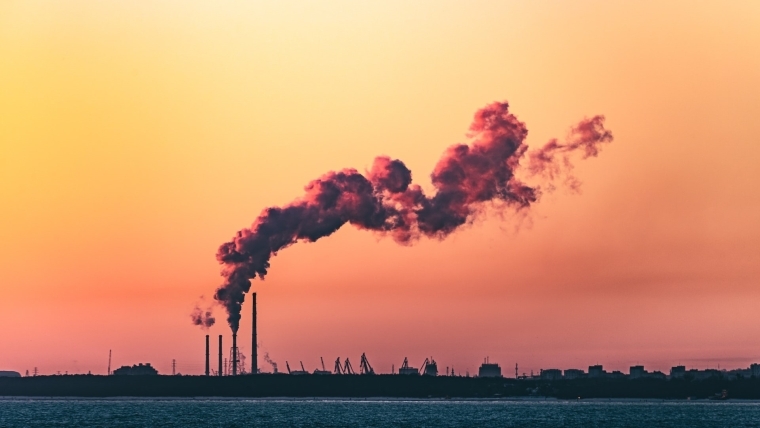
Statistics New Zealand is reporting the largest quarterly decline in greenhouse gas emissions since the agency started tracking emissions 14 years ago.
Emissions fell by 2.7% in the March quarter, according to a Stats NZ release on Tuesday.
Stats NZ said the 2.7% fall was equivalent to 541 kilotonnes and was driven by lower agriculture, forestry, and fishing emissions.
“This is the largest quarterly decrease since the beginning of our time series in March 2010, excluding the pandemic years,” Stats NZ’s environmental-economic accounts manager Stephen Oakley said.
Agricultural, forest and fishing emissions fell by 1.4% or 154 kilotonnes in the March quarter.
Oakley said quarterly emissions for this sector were down 8.1% from their peak in March 2019, and currently at their lowest level since Stats NZ’s emissions series had begun.
The manufacturing industry had the second largest fall in emissions during the March quarter, shrinking by 4% or 88 kilotonnes.
Stats NZ said this is the third quarter in a row manufacturing emissions have fallen.
The sector with the largest increase in quarterly emissions went to the electricity, gas, water, and waste services industry, with emissions rising 7.7% or 126 kilotonnes in the three months to March.
“The increase in electricity, gas, water, and waste services emissions was due to an increase in natural gas used for electricity generation. This follows an 18% decrease in emissions from this industry in the previous quarter,” Oakley said.
Even though emissions had big falls on a quarterly level, emissions rose 0.5% in the 12 months to March 2024.
This was mainly driven by the transport, postal, and warehousing industry which had annual emissions shoot up by 20% or 1,116 kilotonnes.
Emissions from the electricity, gas, water, and waste services industry also rose by 3.4% or 227 kilotonnes in the year ended March.
Agriculture, forestry, and fishing industry emissions went in the other direction and had the largest annual decrease of 1.9% or 839 kilotonnes, which Stats NZ said was mostly due to falls in agriculture emissions.
Last week, the Government publicly released documents on its second emissions reduction plan which revealed New Zealand is set to narrowly meet its first and second emissions budgets for 2022-25 and 2026-30.
However, the country is set to go over budget with the 2031-35 budget by 17 million tonnes of carbon emissions.
Climate Change Minister Simon Watts said in the plan’s consultation document the Government was still confident New Zealand can achieve and sustain the target of net zero emissions by 2050.
“Our success will rely on our ability to sustainably transition to a low-emissions economy,” he said.
The Government’s second emissions reduction plan is set to be published at the end of this year. According to last week’s consultation document, energy, transport, agriculture, forestry and waste will be the Government’s biggest focus.
The Government launched a climate adaptation inquiry in May, tasking Parliament's Finance and Expenditure Committee with developing objectives and principles to address the risks and costs of future extreme weather events.
Last week, the Committee heard public submissions from organisations and agencies about their concerns and suggestions for the climate inquiry in a select committee meeting last week.
The Insurance Council of New Zealand told the FEC that rising natural hazards are affecting the cost and availability of reinsurance and impacting general insurance costs and availability nationwide.
23 Comments
Was this just due to reduced energy usage or increases in carbon use efficiency?
If the former then could be due to economic slowdown with manufacturing decline of 4%¿
Edit. https://ourworldindata.org/grapher/primary-energy-cons?tab=chart&country=~NZL
https://ourworldindata.org/grapher/per-capita-energy-use?tab=chart&country=~NZL
So with higher interest rates, we have:
- less emissions
- falling house prices
- a decent trade surplus
What's not to like? Oh yeah, lower living standards.
But it's a good lesson.
Funny isn't it. Through my travels over the years, I've always noticed that those with the least seem to be the happiest. Family, friends, community, food and the ability to entertain ones' self with little to nothing as well.
The increase in electricity, gas, water, and waste services emissions was due to an increase in natural gas used for electricity generation
So, the previous government didn't achieve f-all with their offshore O&G exploration ban in terms of achieving better environmental outcomes, just more expensive gas and electricity.
That's what the poor households get for voting Labour-Greens.
"just more expensive gas and electricity" ...and lower aluminium export receipts to be replaced by Chinese aluminium.
"Emissions from China’s aluminium sector are immense, and the sector needs to face the same urgency to reduce its coal reliance as the electricity, steel and cement sectors. China’s transition towards a low-carbon energy future needs aluminium, especially in solar panels, electric cars, and electricity cables"
https://ember-climate.org/insights/research/as-aluminium-surges-in-chin…
There would have been no new gas or oil wells anyway. nor will there be now the ban is reversed , unless the govt subsidises them . Plain old economics.
If it was just "plain old economics" why would you ban it? More like plan old ideology that resulted in more strip mined Indo jungle coal being imported. And now we can add strip mined Indo jungle bauxite to the list of green ideology disasters.
But I guess you get that when Cindy makes Captains calls without analysis or public consultation.
"The independent report by Energy Link, commissioned by Energy Resources Aotearoa, shows that New Zealand could have prevented 3.5 million tonnes of carbon emissions from electricity generation between 2017 and 2021, if largely imported coal was instead replaced by domestically produced natural gas."
*this comment was paid for by Big Oil, Big Gas, Monty Burns and Big Orang Utan Bushmeat Ltd.
Given it takes 10 years to get a gas well up and running that fault must be the previous National governments ???
Yes, national are crap but I don't think you can pin this one on them. This was just economical vandalism with a bit of jungle vandalism thrown in for good measure.
"NZIER has calculated the macroeconomic impacts of this ban at both the
national and regional levels
• The ban will be felt most keenly in the Taranaki region, but even at the
national level the ban will reduce real gross domestic product (GDP) by
between $15 billion (3%) and $38 billion (7.4%). The medium scenario is a
reduction of $28 billion (5.4%).1
• Household consumption (the best measure of economic wellbeing and
discretionary income) will reduce by between $7 billion (2.4%) and $20
billion (7%).
• Per household, this represents a $4,800 to $14,200 fall in consumption
spending on average for each year between 2020 and 2050, with a $9,400
drop in the medium scenario.
• Investment will reduce by between $4 billion (5.4%) and $7 billion (8.4%).
• Export revenue will reduce by between $3 billion (1.6%) and $10 billion
(5.2%).
Taranaki will bear the brunt of these impacts"
Pure bullocks.
So NZIER has calculated the economic benefit of gas fields that were never going to be looked for, found or developed and come up with a figure of between 15 and 38 billion (over some timeframe)...great work if you can get it.
Why did they ban it?...virtue signalling plain and simple.
They are politicians after all.
If you take a look at their publications list, they did not provide a brief to the incoming minister Brown. Why not,?, not necessary, he already knew. Thanks Profile, that will come in handy.
Then it got cold and people turned the heaters on, so Huntly started burning coal flat out, cancelling the gains.. 678MW of the stuff right now.
That's our real failure , by both past governments.
Burning coal and gas means a higher spot price for all including cheaper sources like wind solar and hydro, thanks to legislation and full nodal pricing.
However if electricity prices continue to rise just like the generators profits expect more homes to reduce exposure with home solar and batteries.
The lake levels are very low so less hydro than usual
Labour caught a lot of flak for the dry year with lots of coal use a few years ago. I wonder if people will blame the Nats for the weather this time?
Well that's a little inconvenient. The big bad bogey called Agriculture doing it's part, at least heading in the right direction, the rest not so much.
1 - so a minor less-bad blip. Still emitting, too much.
2 - doesn't change the problem; we are running an energy-hungry regime which cannot survive - by several orders of magnitude - using non-fossil sources.
3 - percentages are best left in the delete bin.
You and the green party backed the pandemic response, but more people means more carbon emissions
Eh?
Try making sense.
Hard, I know... when you start from a falsehood basis.
Factual and scientific for each person regardless of size & age. More people = more housing, more food, more medical supplies, more heating (esp in -1 degree weather), more power use, more water & sewage requiring maintenance, more transport etc But I get it you live in a world where people don't need those things, pigs fly and fairies magically make all the food & housing appear in front of you.

We welcome your comments below. If you are not already registered, please register to comment
Remember we welcome robust, respectful and insightful debate. We don't welcome abusive or defamatory comments and will de-register those repeatedly making such comments. Our current comment policy is here.